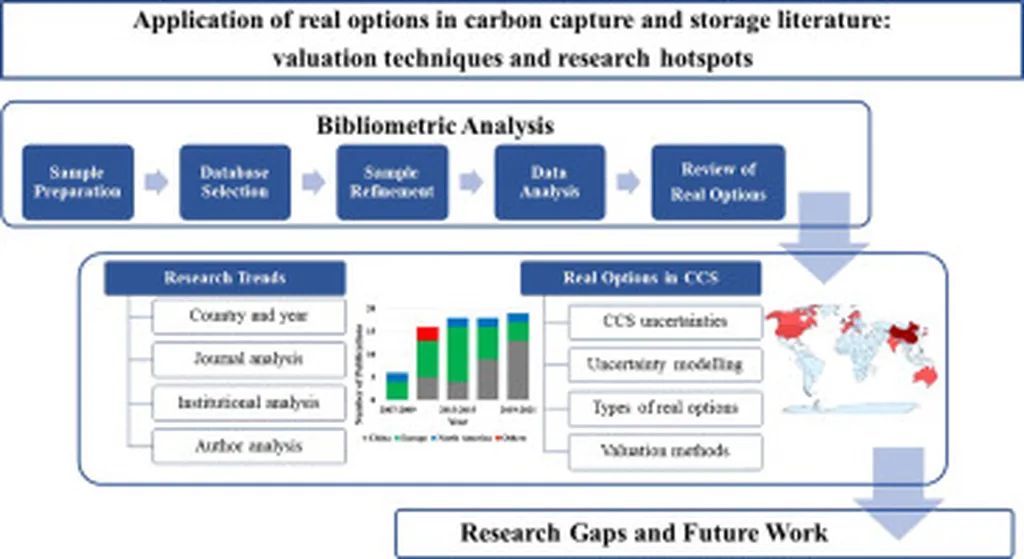In the quest to decarbonize the energy sector, carbon capture, utilization, and storage (CCUS) technologies are gaining traction, but their deployment is often hampered by economic uncertainties. A recent study published in the journal *Energies* offers a fresh perspective on how to make CCUS investments more attractive, particularly in the context of China’s refining and chemical industries. The research, led by Ruirui Fang from the School of Economics and Management at the China University of Petroleum (Beijing), introduces a real options model that could reshape how companies approach CCUS projects.
The study focuses on the conversion of carbon dioxide (CO₂) into methanol through a process called CO₂ hydrogenation, coupled with enhanced oil recovery (EOR). This dual approach not only reduces CO₂ emissions but also generates additional revenue streams, making the investment more appealing. “The key to unlocking the potential of CCUS lies in understanding the interplay between carbon pricing, oil market dynamics, and technological advancements,” Fang explains.
One of the standout findings is the critical role of carbon pricing. The model reveals that a stable and sufficiently high carbon price can significantly improve the economic feasibility of CCUS projects. “When the initial carbon price reaches 125 CNY per ton or higher, refining-chemical integrated plants are incentivized to make immediate investments,” Fang notes. This insight underscores the importance of robust carbon pricing mechanisms in driving CCUS deployment.
The study also highlights the impact of oil prices on investment decisions. While increases in oil prices encourage CCUS investments, their effect is weaker compared to carbon prices. However, when oil prices exceed USD 134 per barrel, the investment trigger is activated, leading to earlier project implementation. This finding suggests that fluctuations in the oil market can influence the timing of CCUS investments, albeit to a lesser extent than carbon pricing.
Subsidies play a crucial role in promoting CCUS investments. The model shows that EOR subsidies and initial equipment investment subsidies can bring forward the expected exercise time of the option. “Immediate investment conditions will be triggered when EOR subsidy reaches CNY 75 per barrel or more, or the subsidy coefficient reaches 0.2 or higher,” Fang explains. These subsidies can act as a catalyst, making CCUS projects more economically viable and attractive to investors.
The levelized cost of electricity (LCOE) from photovoltaic sources is another key determinant of hydrogen production economics. A sustained decline in LCOE—from CNY 0.30/kWh to 0.22/kWh, and further to 0.12/kWh or below—significantly advances the optimal investment window. “When LCOE reaches CNY 0.12/kWh, the project achieves economic viability, enabling investment potentially as early as 2025,” Fang states. This finding highlights the importance of renewable energy costs in shaping the future of CCUS investments.
The research provides valuable guidance and reference cases for CCUS investment decisions integrating EOR and chemical utilization in China’s refining-chemical integrated plants. By offering a comprehensive analysis of the factors influencing CCUS investments, the study paves the way for more informed decision-making in the energy sector.
As the world grapples with the challenges of climate change, innovative approaches like the one proposed by Fang and her team could play a pivotal role in accelerating the deployment of CCUS technologies. By understanding the economic drivers and uncertainties associated with CCUS investments, companies can make more strategic decisions that align with both environmental and commercial goals. This research not only sheds light on the current landscape of CCUS investments but also offers a roadmap for future developments in the field.

